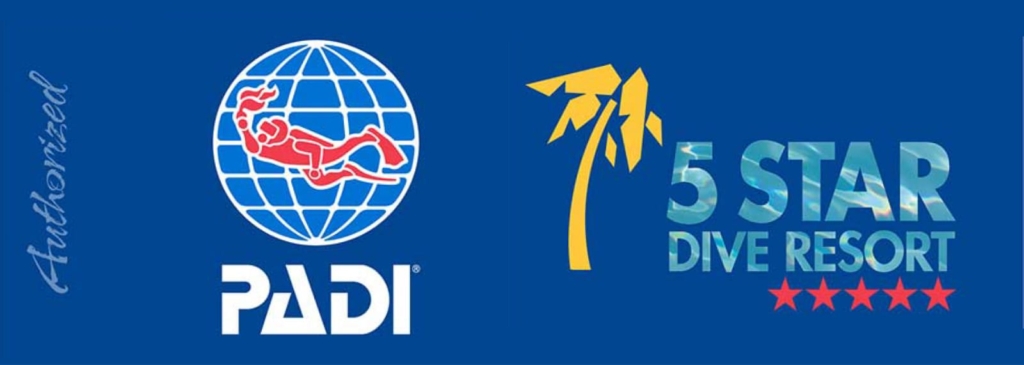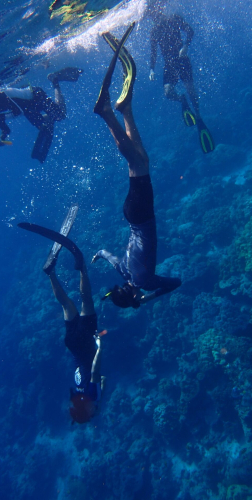Two common activities that let people explore the underwater world are diving & snorkeling. Without the need for specialized training or equipment, snorkeling allows one to observe the underwater environment by swimming on the water’s surface while donning a mask and a breathing tube known as a snorkel. However, in order to explore deeper depths and remain submerged for longer, diving necessitates more specialized equipment, such as a wetsuit, scuba tank, regulator, and fins. There are exceptional chances to observe the splendor of coral reefs, marine life, and underwater scenery through both activities. Because it requires less gear and can be done in relatively shallow waters, snorkeling is frequently seen as a more accessible option for novices.
In contrast, diving provides a more immersive experience by enabling divers to explore deeper waters & come into contact with a greater range of marine life. Essentials of Snorkeling. Fins, a snorkel, and a mask that fit properly are essential for a fun & comfortable snorkeling experience. In order to provide a clear view of the underwater environment, the mask should fit snugly around the face. While fins should be comfortable and offer effective propulsion through the water, a snorkel with a purge valve aids in clearing any water that enters the tube. Diving apparatus.
To guarantee their safety and enjoyment when diving, divers need to make an investment in top-notch gear. A successful dive depends on having a well-maintained scuba tank, regulator, buoyancy control device (BCD), wetsuit, & dive computer. Appropriate Certification and Training, Planet Bali Dive provides all of that.
Before attempting scuba diving, it is essential to receive the appropriate instruction and certification in order to comprehend how to use this equipment safely and effectively. Through this training, divers will gain the abilities and information needed to confidently traverse the underwater environment. Snorkeling provides a singular chance to investigate thriving underwater environments, such as rocky shorelines, seagrass beds, and coral reefs. A wide variety of marine life, including delicate corals, invertebrates, sea turtles, and vibrant fish, can be found in these varied habitats.
Snorkelers can observe the fascinating behaviors of underwater creatures in their natural habitat and witness the complex interactions between various species. Snorkeling enthusiasts frequent coral reefs, which are particularly well-known for their biodiversity and breathtaking beauty. In addition to offering snorkelers a visually stunning experience, these fragile ecosystems are home to a wide variety of marine life.
Seagrass beds are also important nurseries for a variety of marine life, providing a chance to see young fish and other animals at an early age. It’s crucial for novices entering the diving world to approach interactions with marine life with caution and respect. To protect the diver’s safety and the health of the marine environment, it is essential to comprehend how various species behave and to keep a safe distance. Guided tours are offered by numerous dive operators and are led by knowledgeable experts who can offer insightful commentary on the ecology and behavior of marine life. The variety of marine life that divers can see is astounding, ranging from magnificent manta rays and whale sharks to small nudibranchs & seahorses.
One can gain a greater understanding of the ocean’s biodiversity by witnessing these creatures in their natural environment. Divers should avoid coming into contact with marine life and causing any disturbance to fragile ecosystems in order to reduce their negative effects on the underwater environment. The most important thing to keep in mind when diving or snorkeling is safety. Before getting into the water, people should evaluate their own swimming skills and be mindful of any nearby dangers.
It is essential to dive or snorkel with a friend in order to support and help one another in the event of an emergency. Maintaining appropriate buoyancy control & performing pre-dive safety inspections on equipment are crucial procedures for divers to guarantee a fun and safe dive. Decompression sickness and running out of air underwater can also be avoided by keeping an eye on the air supply & following set dive limits. Snorkelers should be aware of shifting weather patterns and steer clear of violent currents or choppy waters that could endanger their safety. A popular destination for snorkelers & divers, Bali, Indonesia, is known for its diverse marine life and breathtaking underwater scenery. Numerous colorful coral reefs brimming with sea turtles, colorful fish, & other amazing creatures can be found on the island.
Well-known diving locations like Tulamben, Nusa Penida, and Menjangan Island provide chances to explore shipwrecks, come across manta rays, & take in the stunning underwater landscape. By visiting shallow reefs near the coast, where they can see a variety of tropical fish and colorful corals, snorkelers can also take in Bali’s coastal splendor. The island is a popular spot for both inexperienced and seasoned snorkelers due to its warm waters & good visibility.
Whether exploring Bali’s iconic dive sites or leisurely snorkeling along its picturesque coastline, visitors are sure to be captivated by the island’s rich marine biodiversity. Learning sophisticated techniques can improve the underwater experience for those looking to improve their snorkeling abilities. Effective finning methods can increase underwater propulsion, enabling snorkelers to travel farther while using less energy. Moreover, using breath-hold techniques can increase the amount of time spent looking at marine life below the surface. Snorkelers who are more experienced might also think about purchasing underwater photography gear to take breathtaking pictures of colorful reefscapes & marine life.
They can share their experiences with others & record their interactions with marine life thanks to this. Also, by giving a greater understanding of the underwater ecosystem, learning about local marine species & their behaviors can enhance the snorkeling experience. In conclusion, diving and snorkeling provide unmatched chances to fully experience the fascinating underwater world. People can go on amazing oceanic adventures that deepen their appreciation of the diversity and beauty of our planet’s oceans by choosing the proper equipment, being aware of safety precautions, honoring marine life, & picking unique locations like Bali.












